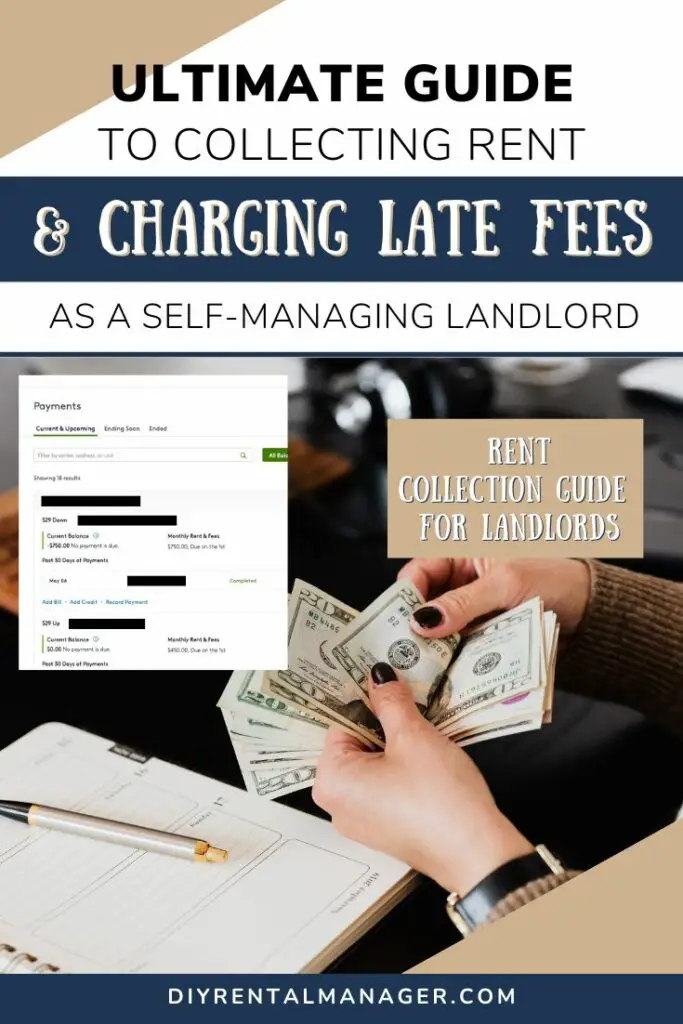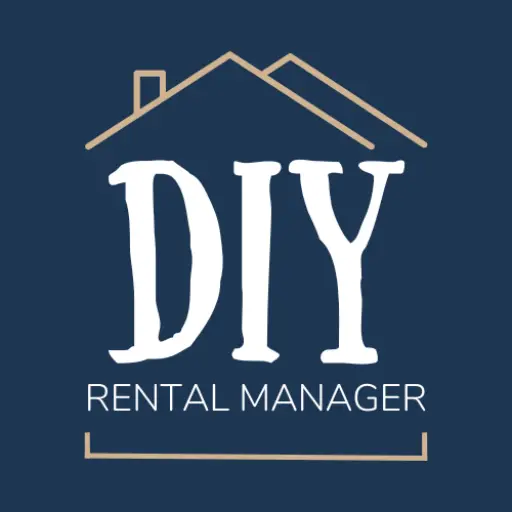Collecting rent from tenants is one of the most time-consuming (and emotionally charged) parts of being a landlord.
Not only will you get every excuse under the sun about why rent will be late this month (again), but you will also miss out on opportunities to collect extra income and increase rent over time if you don’t have your rent collection system down to a science.
So, what is the best way to collect rent from a tenant?
The best way to collect rent as a landlord is to use property management software that lets tenants pay electronically with a bank account, credit card, debit card, or pre-paid Visa card. Many of these software will also automatically charge late fees and send email reminders to the tenant that rent is due (or late).
The software we use is Apartments.com’s Rental Manager tool because it is 100% free!
With those main points in mind, I’ll cover everything you need to set up a rent collection system that will make chasing down rent a thing of the past below.
Let’s dive in!
Quick Navigation
- Different Ways A Landlord Can Collect Rent From A Tenant
- Our Rent Collection System (Used On 18 Rental Units)
- How We Handle Late Fees (To Guarantee We Always Collect Rent Plus Some)
- The Benefits Of Collecting Rent Electronically
- How We Switch Existing/Inherited Tenants To This Rent Collection System
- Final Thoughts
- Related Content
1. Different Ways A Landlord Can Collect Rent From A Tenant
There are many ways to collect rent from a tenant, but many of them have more problems associated with them than benefits. Since we acquired our first rental property back in 2015, we’ve tried almost every form of rent collection out there. Here’s what we’ve learned:
| Rent Collection Method | Pros | Cons |
|---|---|---|
| Collected in person | -Receive money immediately -Tenants can pay without needing access to a bank account or credit card | -High risk of being robbed while collecting money -Must schedule a time to meet with someone -Must make a trip to the bank to deposit the money -No late fees charged automatically -No email reminders sent automatically -Tenant has limited payment options (cash, check, money order) -Often have to make multiple trips to collect partial payments |
| Dropbox on the side of the building | -No in-person meetings/scheduled time -Tenants can pay without needing access to a bank account or credit card | -High risk of being robbed by the dropbox being broken into -Must make a trip to the bank to deposit the money -No late fees charged automatically -No email reminders sent automatically -Tenant has limited payment options (cash, check, money order) -Often have to make multiple trips to collect partial payments |
| Separate bank account the tenant can deposit into | -No in-person meetings/scheduled time -Tenants can pay without needing access to a bank account or credit card | -No late fees charged automatically -No email reminders sent automatically -Tenant has limited payment options (cash, check, money order) -Significantly harder to track who made the payment (especially a cash payment) because their name is not tracked with the payment |
| Mailed payment | -No in-person meetings/scheduled time -Tenants can pay without needing access to a bank account or credit card | -High risk of mail/cash/money order being lost -Must make a trip to the bank to deposit the money -No late fees charged automatically -No email reminders sent automatically -Tenant has limited payment options (cash, check, money order) -Often have to make multiple trips to collect partial payments |
| Peer-to-peer payments (Venmo, Cashapp, Zelle, PayPal, etc) | -Receive money immediately -No in-person meetings/scheduled time -Can receive money at any time of day | -No late fees charged automatically -No email reminders sent automatically -Tenant has limited payment options (must have a bank account or credit card) -Tenant can dispute the charge more easily |
| Online payment through property management software | -Receive money immediately -No in-person meetings/scheduled time -Money deposited directly into your chosen bank account -Late fees charged automatically -Email reminders sent automatically -Ledger of payments the tenant and the landlord can access at all times -Tenants can choose the most convenient form of payment for them (credit card, debit card, bank transfer, prepaid card) -Tenants can pay without needing access to a bank account or credit card -Can receive money at any time of day | -Tenant can dispute the charge more easily (if using a credit card or debit card only) |
Manual Rent Collection Methods Are More Likely To Become Lost Or Stolen
The biggest problem with any of the manual ways of collecting rent (collected in person, a Dropbox payment, or a mailed payment) is the risk of the payment being lost or stolen. It is very common for thieves to scout out a highly populated renter area and watch for landlords who drive around collecting money in person. They know that the landlord will have a lot of cash and money orders on them at the beginning of the month, so they know exactly when to try to steal from you.
The same problem occurs with the rent Dropbox. Thieves know rent is dropped into those boxes regularly, so they will try to break in and steal the money. You also have no clue when tenants drop the money off (unless they tell you, which isn’t always the case), so money can be sitting in there for days without you realizing it.
It is also common for mail to be lost. If a tenant sends guaranteed funds (cash, cashier’s check, or money order) through the mail and it gets lost, then there is no way for you to get that money back. That money is gone forever. We’ve had mail from our tenants become lost before (thankfully never any rent payments), so we choose to not use this method as a regular way we collect rent.
Manual Rent Collection Methods Are Time Consuming
The second biggest problem with any of the manual ways of collecting rent is the amount of time it takes to collect the rent and get it deposited into your bank account. Who wants to spend hours driving around, collecting rent, then driving to the bank (which is only open at super inconvenient times) only to have to wait in line to finally get the rent payment in your bank account?
Driving around and collecting rent in person was the original way we collected rent. We wasted HOURS driving multiple times a month to each property to collect rent only to be given a last-minute excuse as to why they could only make a partial payment that day.
So we would collect the partial amount and repeat the process the next week. No matter how many times we asked them to guarantee that the full rent payment would be there, we would still show up and get the excuse as to why only a partial payment was being made. We quickly learned that this form of rent collection was not a great choice long-term.
After about 2 months of that, we decided to open a separate bank account that could only be deposited into. Then we gave that bank account number to the tenants so they could deposit their rent payments into that account whenever they had the money.
This was significantly better than collecting rent in person. However, many of the tenants made several small cash deposits that did not have their name attached to the payments AND they wouldn’t tell us when they made the payments. That rent collection quickly turned into an accounting nightmare that required a ton of communication with the tenant. And still, many of them gave excuses as to why they were paying rent late.
A Better Rent Collection Solution: Peer-To-Peer Payments
The next rent collection method we tried was Venmo. This payment method was great because there were no scheduled meeting times to collect rent, there was a clear transaction log of who made the payments and when, and we could request the rent payment at the beginning of the month (instead of relying on them to remember to make the payment).
The peer-to-peer payments worked for close to 4 years for us, but it still had some problems. There wasn’t a running total of the remainder of rent that was due, no late fees were automatically charged, no rent payment reminders were automatically sent, and the tenants could easily dispute these payments with Venmo who would pull the money back.
We didn’t have a dispute happen to us, but it easily could have if we had a problem with one of the tenants. So, as I learned more about managing rental properties, I finally found a rent collection solution that was better than the rest.
The Best Way For Landlords To Collect Rent Payments: Online Payment Through Property Management Software
The best way we found to collect rent was through property management software that accepted online payments (we use Apartments.com – more on them below).
The property management software is fantastic because it:
- Has a running total of the rent that is owed
- Shows all of the payment and billing transactions in the account so we and the tenant can see what has been charged and paid
- Automatically charges late fees and sends email reminders that rent is due
- Automatically deposit rent into your chosen bank account
- Gives the tenant the most options to pay rent (credit card, debit card, bank transfer, or prepaid card)
- Is super user-friendly to use
Once I finally found this option, I quickly switched all 18 tenants over to this new payment system, and we haven’t looked back. I can attest that good property management software saves you HOURS of work collecting money, creating and signing leases, and managing tenant information.
Now that you understand why we’ve chosen the rent collection method that we have, let’s dive into how we put rent collection on autopilot.
2. Our Rent Collection System (Used On 18 Rental Units)
First off, I have to start by saying that this rent collection system is most effective when you screen for only the best tenants (by verifying their income/employment, rental history, credit score, and background report).
While we spend almost no time collecting rent from our tenants that we screened properly, we do spend a little bit of time tracking down rent from tenants who we did not screen properly. (Learn from our mistakes by screening better!)
However, with this system, we still only spend less than 1 hour per month communicating with any late-paying tenants about their plans to pay rent this month and billing late fees. As the years go by, we are slowly acquiring new tenants who pay on time every month. So soon, it will be more like 5 minutes a month spent on collecting rent.
With that in mind, let’s get into how we spend so little time collecting rent.
The Property Management Software We Use
The property management software we use is Apartments.com’s Rental Manager Tools because it is 100% free to use and provides an all-in-one management solution for small-time landlords.
Some of these features include automatic rent collection, tenant contact information, document management, a maintenance request portal, an expense tracker with full reporting functionality, a tenant-paid background and credit report, and a state-specific lease that can be signed virtually via DocuSign.
And the best part? They offer ALL of those features 100% for free!
There are tons of other property management software out there that offer all of these features for a price. While the paid-for software does offer a little bit of convenience because it lets you manage one listing that publishes on over 30 different listing sites, it’s hard to pass up the free component of this website. (Apartments.com only publishes across 12 sites – you have to manually publish whatever other sites you also want to use.)
We mainly use the tools to list our vacant properties on Apartments.com, screen applications, manage tenant info, sign lease renewals online, collect rent payments online, and track maintenance requests. Once we figured out how to use this tool, our time spent managing the rental properties was cut in half.
No longer do we have to remind tenants that rent is due on the 1st of the month because Apartments.com does that for us! It automatically bills late fees and lets the tenants pay whichever way they want (bank account, debit card, credit card, or prepaid Visa card) with no extra cost to us as landlords.
Our Automated Rent Collection System
With that in mind, this is how our rent collection system works:
- Our lease only allows rent payment through online payment on Apartments.com – Apartments.com accepts online payments via bank transfer, debit card, credit card, or pre-paid Visa card, and all tenants have access to at least one of these payment options
- Rent is due on the 1st – an email is automatically sent through Apartments.com letting the tenant know a balance is due (or if they have auto-pay set up, then it makes the payment for them automatically on the date they choose)
- We provide a 5-day grace period as part of the lease – as long as they pay by the 5th of the month, no late fees will be charged. This reduces a ton of excuses because some free days are already built into our system
- A $50 late fee automatically posts on the 6th of the month if a balance is still due – Apartments.com posts this for us and sends an email to the tenant letting them know a late fee was due and they have to log in to schedule a payment
- A $10 daily late fee is posted manually every day from the 7th of the month if a balance is still due – Apartments.com does not (yet) have a feature to do this part automatically, so I manually log in and post this charge. Apartments.com sends the tenant an email that another charge was posted though, so they continue to get a reminder without me having to reach out directly
This simple system has completely changed how much time it takes us to collect rent.
3. How We Handle Late Fees (To Guarantee We Always Collect Rent Plus Some)
In order to make sure rent is paid on time, we enforce some pretty strict late fees. These late fees might seem harsh at first glance, but the whole point of them is to encourage tenants to pay on time so they never have to pay these late fees. This is how we explain the late fees to them at the lease signing:
If you do not pay your rent by the 5th of the month, this is what to expect:
- On the 6th, $50 will be added to your total due.
- On the 7th, an additional $10 will begin accruing each day until your rent is paid in full.
- On the 12th, you will be given an Eviction Notice, at which time you have 3 days to pay your rent and late fees in full, or you will have to move.
- By the 15th, if we have still not received your rent payment and late fees, you will be evicted.
At that point, many of the tenants have shocked looks on their faces and make comments about never wanting to be late on their payments. That’s EXACTLY what we want. If you set the precedent early, you never have to worry about chasing down rent.
Of course, this tactic does not work with every tenant (especially when we inherit some tenants that we didn’t screen personally), so we’ve got a late fee management system that helps us collect extra income from our rental properties.
We will waive some of the $10 daily late fees if the tenant emails us and gives us a date that the remainder of the rent will be paid, but we never waive the $50 late fee. This is how we put a little pressure on the importance of paying rent on time, but still are flexible and give the tenant a chance to get back on track.
If no communication has happened and the tenant has accumulated $100 in late fees, then we send an email explaining that a 3-day Notice To Pay Or Vacate will be posted on their door if they don’t give us a date when the remainder of the rent will be paid.
If they don’t get the final payment (plus all late fees) sent in by the last week of the month, then we post a 3-Day Notice To Pay Or Vacate on the door and give them one more chance to pay their rent for the month.
In most cases, when we explain how the late fees work, that’s enough to convince the tenants to pay on time because they understand that those late fees add up. In the cases where a tenant doesn’t pay on time, they are much quicker to communicate their payment plans with us so they can get some of the late fees waived until they can get the full payment in.
Only a few times within the last several years since we’ve started this system have we had to actually drive out and post the Pay or Vacate Notice on the door. Whenever it gets to that point, the tenant typically finds a way to get the money sent in and we move on for the next month.
4. The Benefits Of Collecting Rent Electronically
There are several benefits to collecting rent electronically. Those benefits include:
- No risk of being mugged while meeting in person
- No risk of payments being lost in the mail
- Saves time because you don’t have to go anywhere to collect rent (not even the post office or the bank to deposit the checks)
- Encourages tenants to pay early/on time because they can send multiple partial payments with a click of a button
- Provides an extra source of income automatically if tenants don’t pay on time because the late fee posts automatically
- Gives tenants multiple ways to pay so they can choose the method that’s most convenient to them (they also can set up auto-pay, which we LOVE when they do that!)
- Makes the payment tracking process much more simple because we and the tenant can see at all times the running total and the ledger of all charges and payments made
- Gives tenants the option to make as many partial payments as they desire to help them pay rent on time
5. How We Switch Existing/Inherited Tenants To This Rent Collection System
As we acquire new rental properties, we often acquire new-to-us tenants that we have to get switched over to our new rent collection system.
We start by sending a letter which:
- Introduces us as the property management company
- Explains that we use Apartments.com to collect rent payments and manage maintenance requests
- Asks them to send us an email with their updated contact information
- Gives them a deadline to send the contact information and set up their account on Apartments.com
- If they set everything up by the deadline, then we send them a $100 gift card after their first successful payment through Apartments.com
We also email them a copy of our New Tenant Orientation Letter that explains how rent payments and late fees work, how maintenance requests work, and how our other rules and regulations work, so they can easily learn what to expect from us as property managers.
The transition process can be tedious, but we have a pretty good system that gets inherited tenants to quickly set up on Apartments.com so they can make rent payments. You can learn more about how we handle inherited tenants in my other article. [COMING SOON]
Final Thoughts
That’s it! By now, you have a foolproof method to put your rent collection on autopilot. Now, all that’s left to do is sit back and let the rent payments flow into your bank account!
You’ll also want to make sure your bank accounts are set up in a way that makes managing your rental property bills a breeze. [COMING SOON]
We’ve found that by using property management software that accepts online payments, we get more tenants who pay on time (and oftentimes a little early). This ultimately helps us run our rental portfolio better and provide better services to our tenants
I hope you find this article useful and that it helps you manage your rental properties in a fraction of the amount of time you are currently managing them!
Catch you in my next post!
Related Content
Check out my recommended tools, templates, and resources to free up your time from constantly working on and worrying about your rental properties. My husband and I use these tools to self-manage 18 rental units (and counting) for only 5-10 hours a month.
Keep in mind that most of these items are either free or reasonably priced for the amount of value that they provide. My goal on this page is to recommend tools, templates, and resources that we use daily and wish we had known about at the beginning of our landlord journey. Since implementing them, they’ve saved us countless hours and tons of headaches.
Finding good tenants for a rental property is arguably one of the most essential tasks that a self-managing landlord must accomplish. You’re searching for a high-quality tenant that will pay on time, take care of the property, and be easy to communicate with all while trying to get the most amount of rent and filling the vacant unit as quickly as possible.
That’s no small feat! So, how can you find good tenants for your rental property?


By Christine
Christine is a blogger and real estate investor/property manager who self-manages 18 rental units (and counting) alongside her husband, Adam. Although she successfully automates the management of her rentals and pockets the property management fee now, her path to success was not easy.
Go here to read her story, “From An Overwhelmed First-Time Landlord To A Pro Investor Self-Managing 18 Rentals On Less Than 10 Hours Per Month“.
Recent Posts
How To Reject A Tenant Application (With Examples!)
When you start to accept applications for your rental property, you’ll inevitably get some applications that do not meet your minimum screening standards (even if you list them in the listing, some people just don’t read or don’t care). When this happens, you’ll have to carefully review the application and send back a Tenant Application…
How To Write A New Tenant Welcome Letter For Your Rental Property
When we have found a new tenant that we are ready to sign a lease with, we want to start the new relationship off on the best terms possible. In order to do that, we need to ensure that they are familiar with the most important details of the lease. We do this by providing…
Ultimate Guide To Collecting Rent And Charging Late Fees As A Landlord (Easy System!)
Collecting rent from tenants is one of the most time-consuming (and emotionally charged) parts of being a landlord. Not only will you get every excuse under the sun about why rent will be late this month (again), but you will also miss out on opportunities to collect extra income and increase rent over time if…




